Bletchley Park
Most readers of this blog are probably familiar with Bletchley Park and the significance of this place in breaking the codes used by the axis military forces during the second world war.
The electromechanical systems developed and used here to aid the codebreakers in their daily work led directly to the electronic digital computers of the mid-twentieth century, and then to the modern world as we know it.
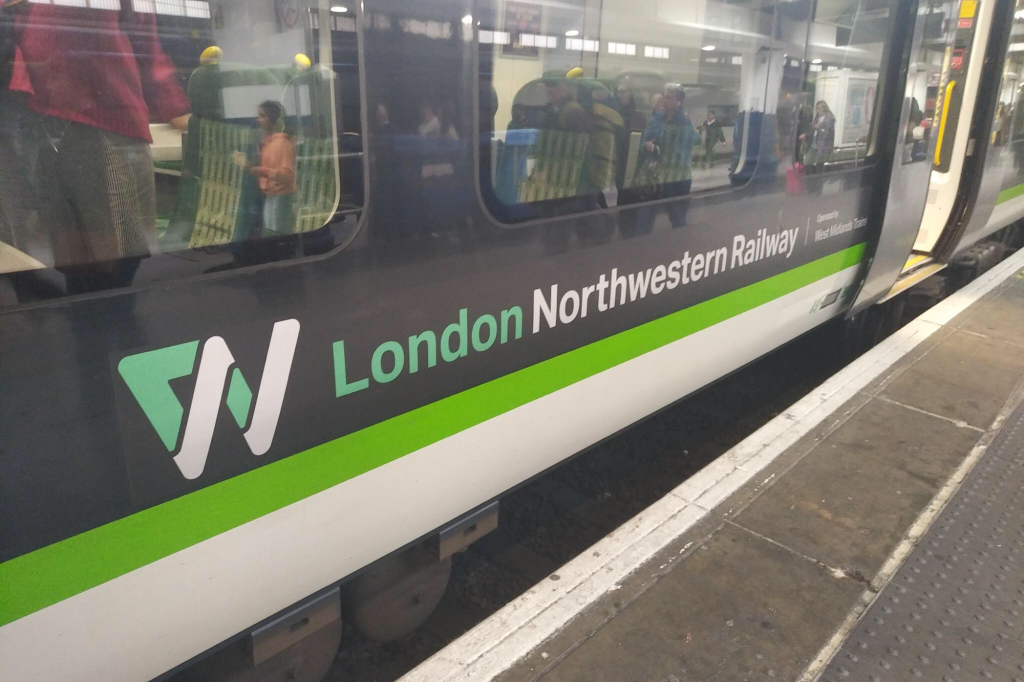
After boarding the London Northwestern Railway at Euston station, the hour long train journey took us from central London, through the suburbs, then the pastoral English countryside to the station at Bletchley, just south of Milton Keynes.
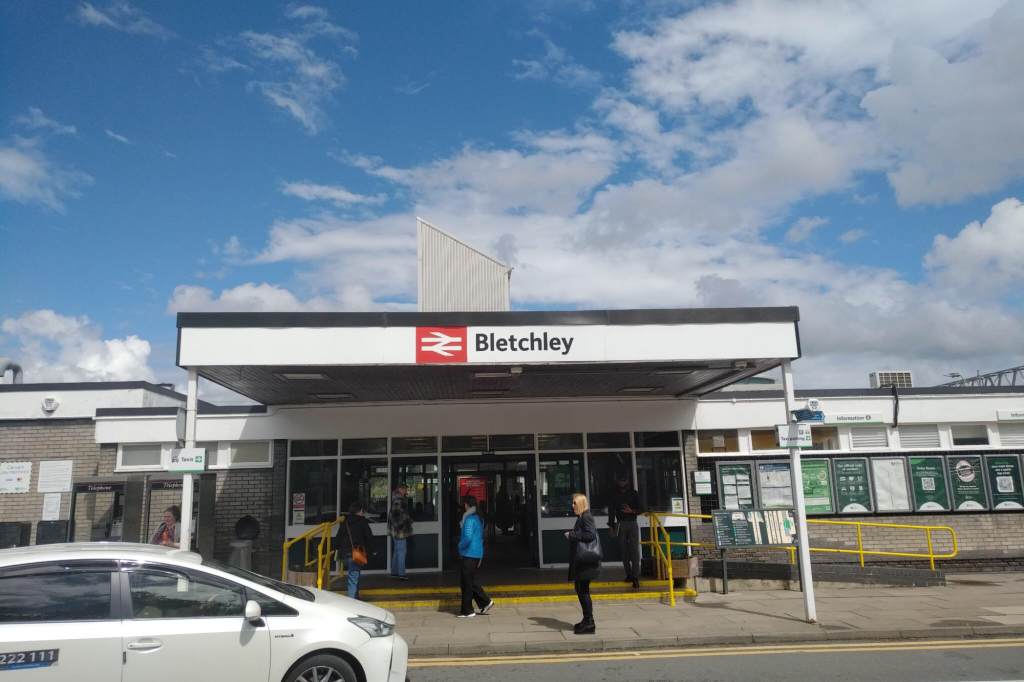
Bletchley Park is a five minute walk from the train station at Bletchley, the town of the same name. In keeping with the formerly clandestine nature of the work at Bletchley Park, there are no loud signs to welcome you, just the Union Jack flying over the nondescript visitor center in Block C.
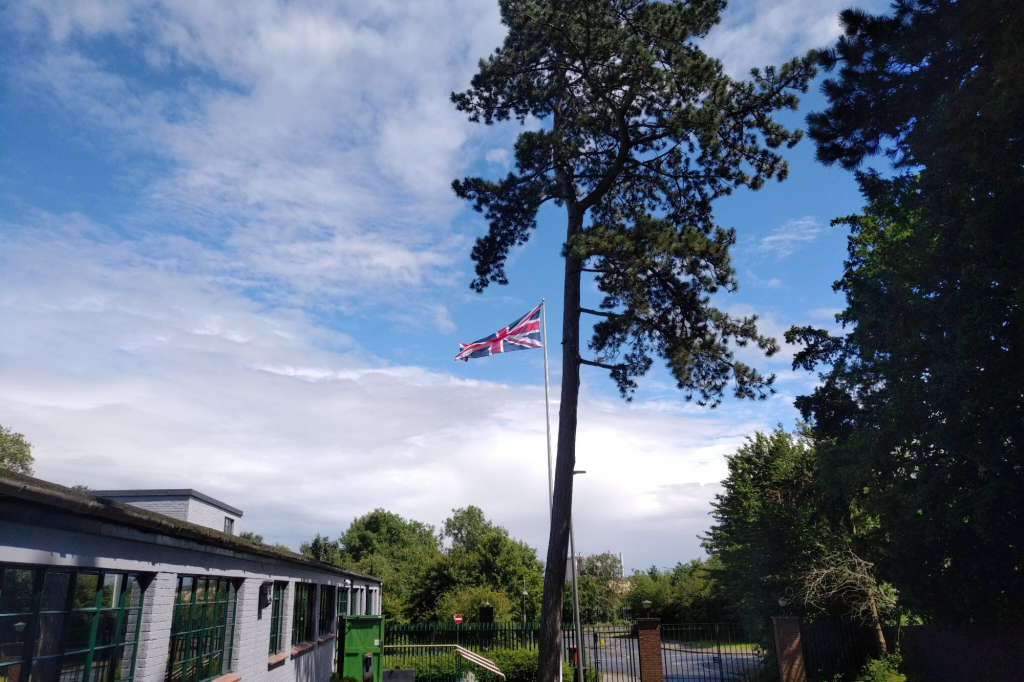
Exiting the visitor center, any ham will quickly spot the three-element SteppIR Yagi perched atop a roof-mounted tower. Also from the tower, a folded dipole extends over the the Block B building which houses the Alan Turing museum exhibits. The other end of this antenna farm is plugged into GB3RS, the amateur radio station for the National Radio Centre of the RSGB.
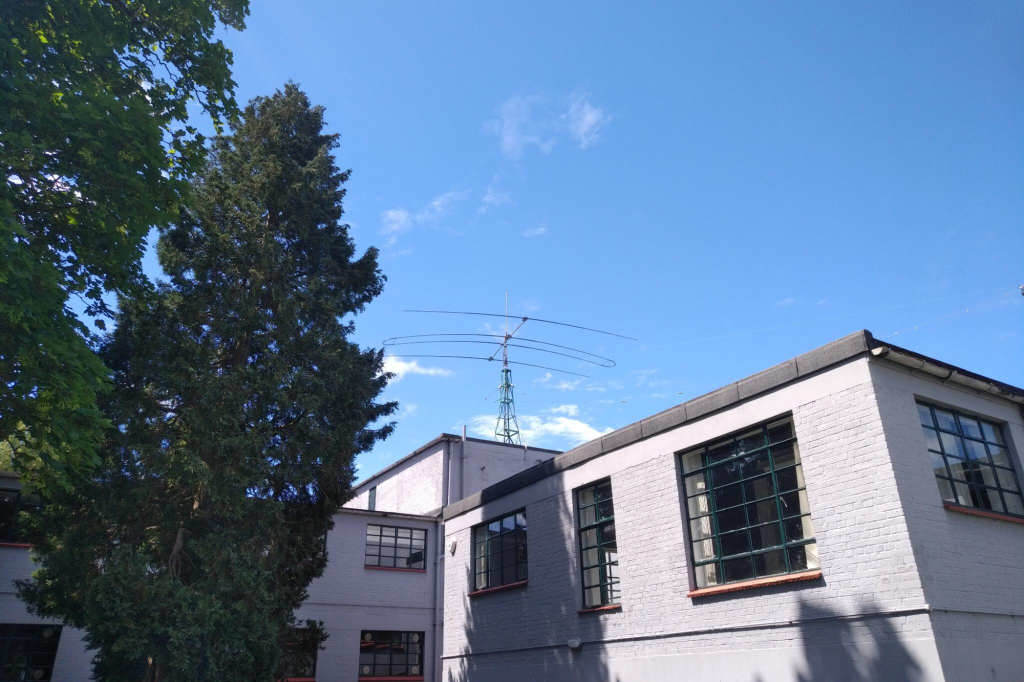
The friendly and helpful staff of amateurs at the NRC played a crucial role in my hoped-for plan of activating Bletchley Park for Parks On The Air.
Surprisingly, the POTA page for GB-0507 showed only a handful of activations of this iconic location. Seeing as this is a heritage site, I sent an email to the NRC about week before my visit asking for advice on how to be a welcome guest POTA operator.
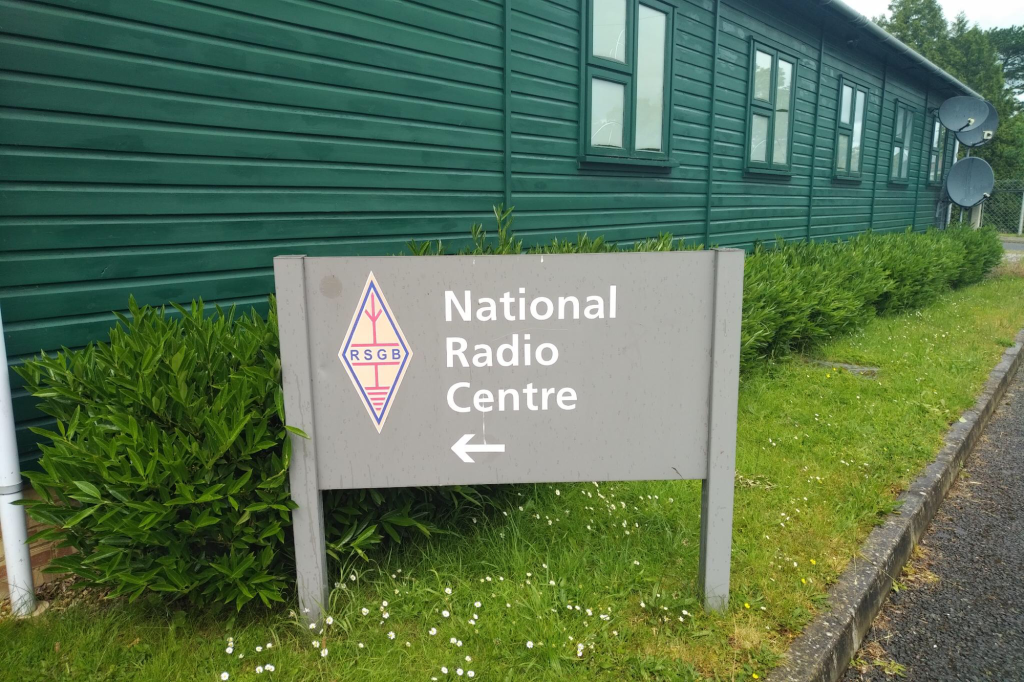
Note, the NRC is colocated on the grounds of the museum but they are not a part of Bletchley Park. The NRC is a separate organization.
Martyn G0GMB, the Director of the NRC, kindly responded to my enquiry and informed me that individual amateur radio activity is not generally permitted on the grounds of Bletchley Park due to the number of visitors they receive and concerns about RF safety. This could explain the low number of activations.
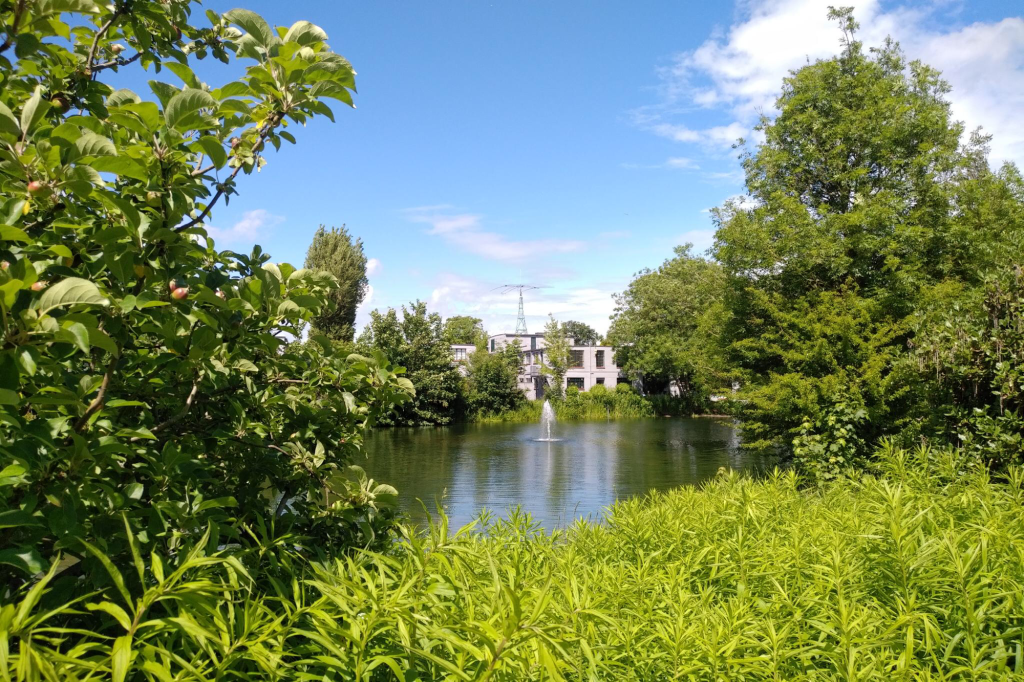
Martyn suggested I could set up in the overflow car park few minutes walk down the road from the visitor center. While not on the grounds of Bletchley Park proper, the parking lot operation would still be in the spirit of POTA and would reasonably count as a valid activation location.
When I arrived at Bletchley Park on Friday afternoon, I was met by Mervyn G4KLE who was expecting me thanks to a note left by OM G0GMB. Mervyn asked where all my equipment was and I motioned to the pack on my back.
Because my radio and antenna was a low impact, minimal footprint QRP setup, I was told that I could make use of the picnic table just out the side door of the GB3RS shack, with my antenna setup just beside it. This dead-end spot was not on any of the paths frequented by park visitors and my antenna would not be easily visible.
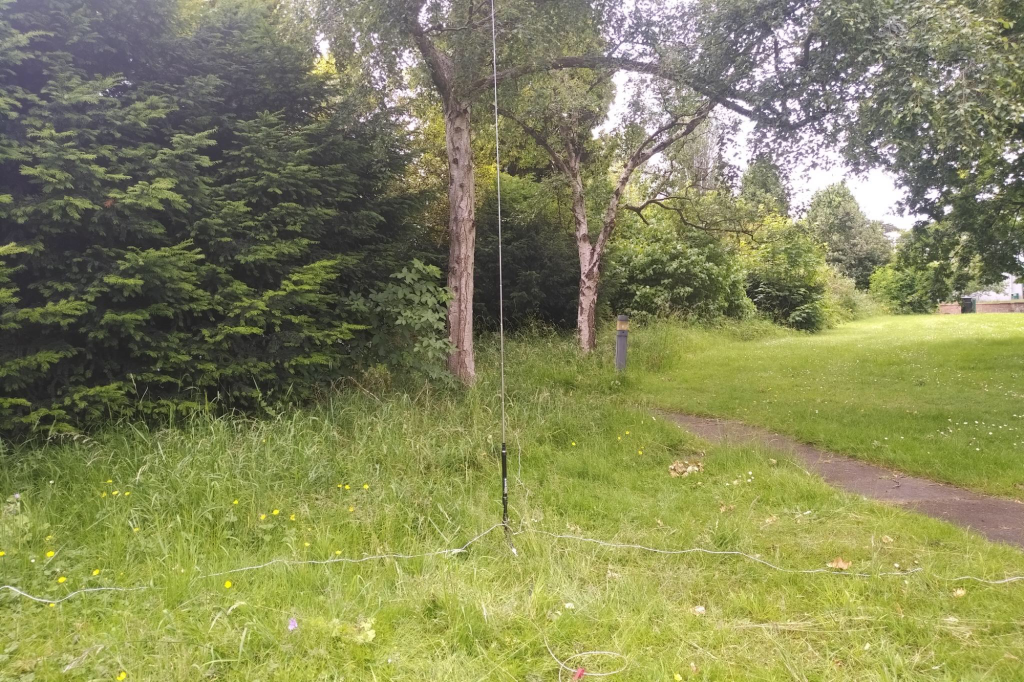
This was a much better arrangement than trying to activate from a car park without a car! I quickly deployed a GRA-GNT micro tripod with center spike pushed easily into the soft ground. The GRA-7350T loaded vertical and a set of short radials provided an SWR of 1.05 to 1.
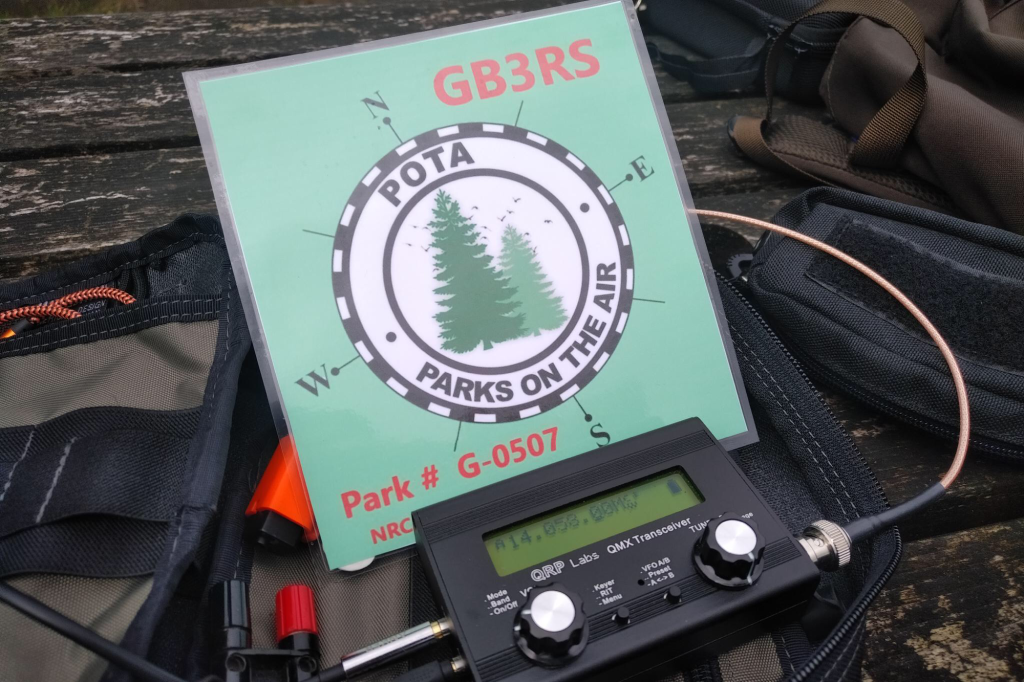
I chose the QMX as a travel radio while in Britain because with it, the overall kit is very lightweight and compact. With the exception of the tripod the whole kit fits in my carry-on. The GRA-GNT antenna mounting kit has to fly in checked baggage due to several aggressive looking spikes that would certainly be flagged by airport security.
One of the display cases inside the NRC shows an original QCX radio produced by Hans Summers G0UPL, so it is only fitting for the QMX to be operated in its ancestral homeland.
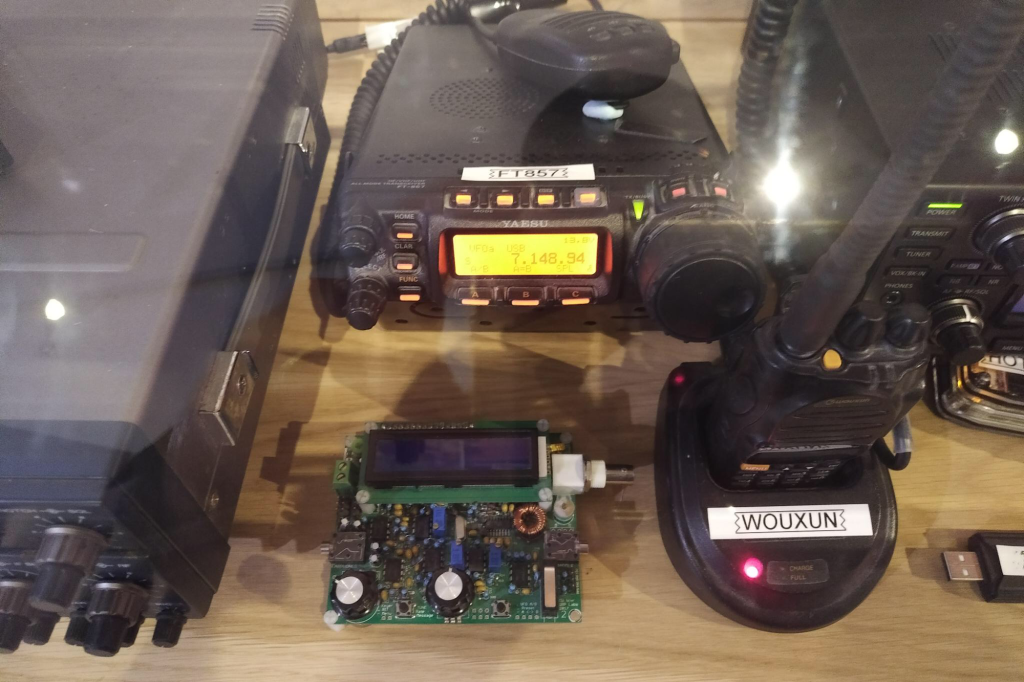
I scheduled the activation for the whole day on the POTA app and thankfully the RBN connection was working well and spotted me just moments after starting to call “CQ POTA DE M/W6CSN” which was programmed into message slot #1 on the QMX.
I had no idea what to expect working a POTA activation in Great Britain and where most of the awake ham population would be European. As such I was a little surprised when the first call was from K2UPD in Kentucky, USA – and he was loud.
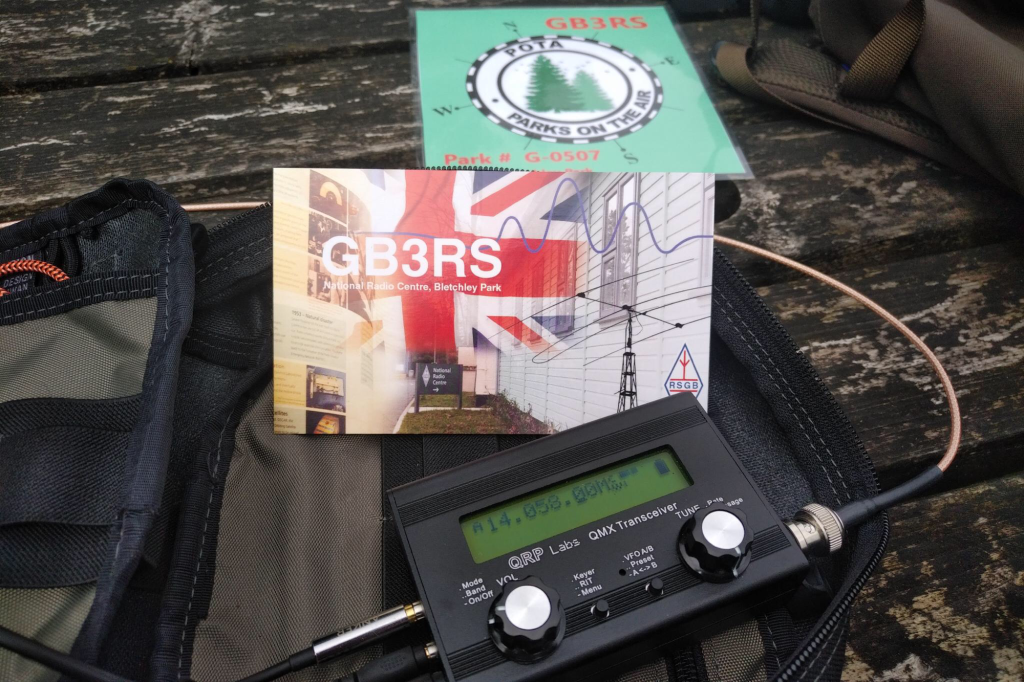
Throughout the hour that I was on the air there was alternating periods of sunshine and clouds with occasional light rain. The rain was nothing that couldn’t be handled by the Rite-In-The-Rain logbook and by simply closing the flap of the Maxpedition pouch that held the radio and battery.
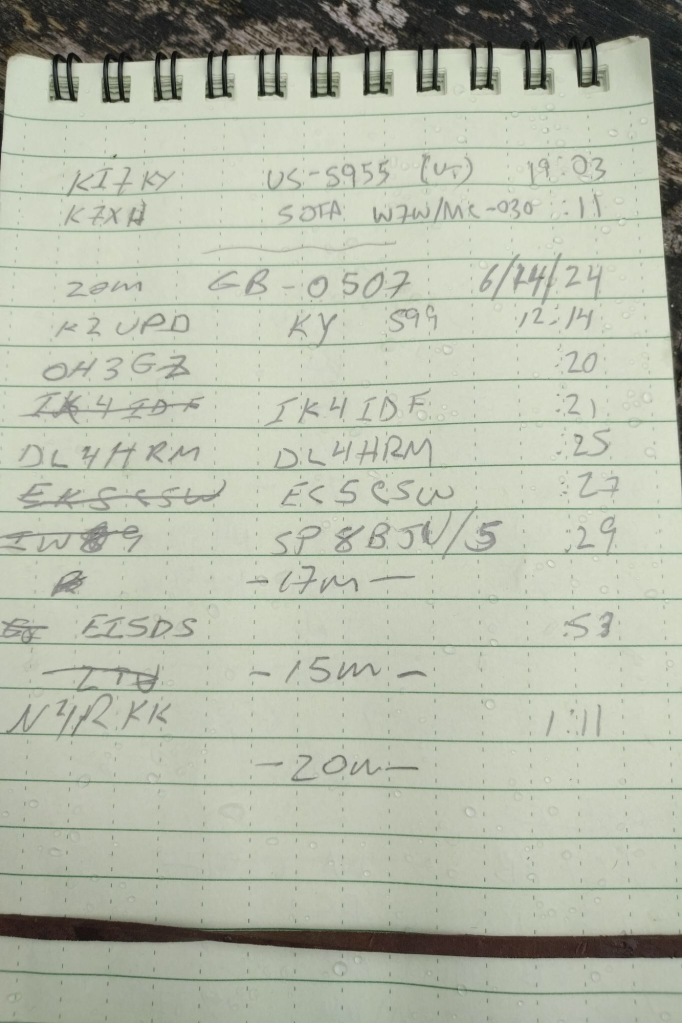
However, needing just two more contacts for a complete activation, the skies started chucking down rain in large quantities. At this rate both the station and the operator would soon be thoroughly soaked. I hastily made an arrangement with Mervyn G4KLE where he turned the power down on GB3RS as low as it would go and I worked him both as GB3RS and then G4KLE to finish out the ten.
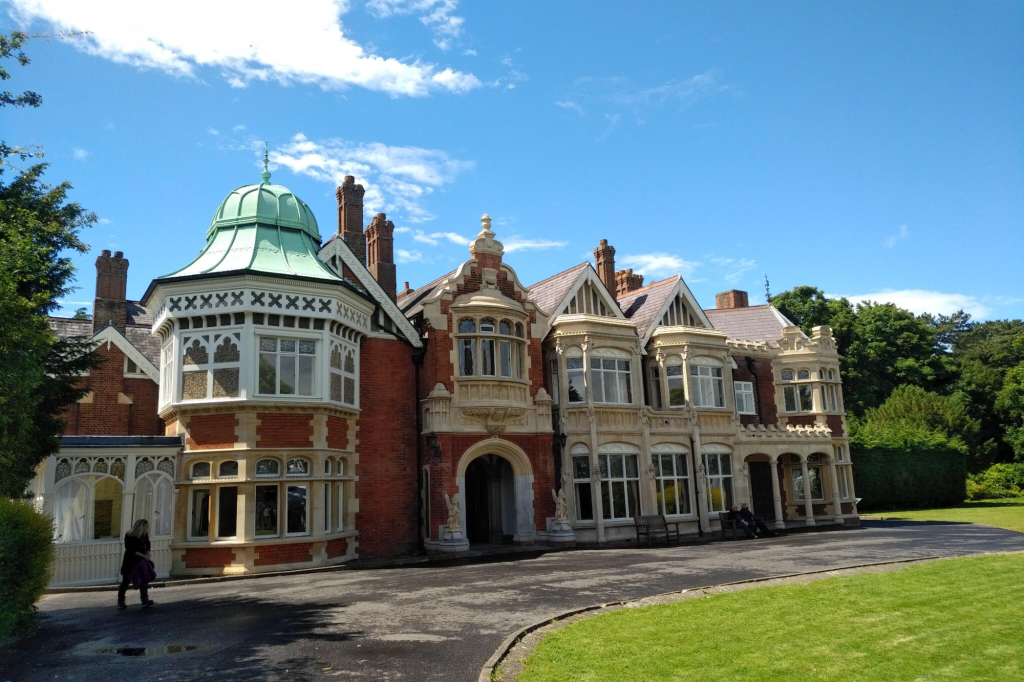
While that stunt may have stretched the spirit of the rules, they were valid over-the-air contacts and counted for POTA. I was simply working him line of sight off the side of his beam.
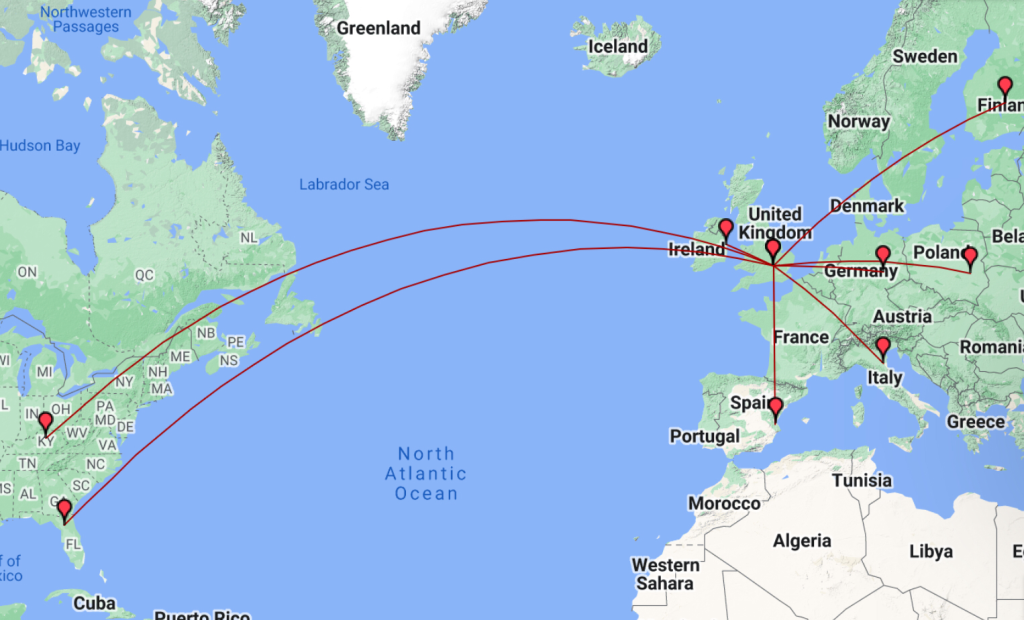
I quickly bundled all the stuff back into the GB3RS shack and tried to dry the wettest of the equipment before stowing it all back in my pack.
I can say with confidence that without the kind assistance from Martyn, Mervyn, and the whole gang at the National Radio Centre that my attempt to do a POTA activation at this important historical site would not have been successful, if it even happened at all. They really are a great bunch of guys.
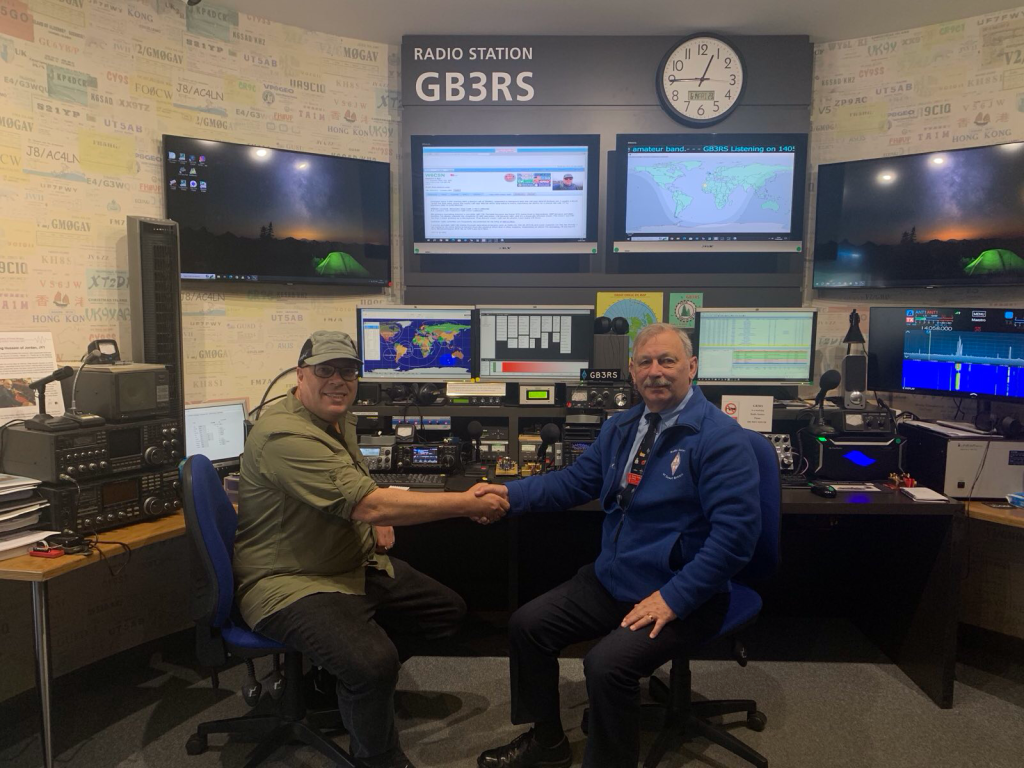
If you ever visit Bletchley Park, which I highly recommend, and are thinking about doing a POTA activity it is imperative that you contact the people at the NRC ahead of time and make appropriate arrangements. GB-0507 is a sensitive and historically significant site, do not just show up with a bunch of ham radio equipment and expect that you’ll be able to operate.
Hyde Park
A couple of days after the successful excursion to Bletchley Park, I had some time available in the morning and I had been wanting to do another POTA activation while in London. Hyde Park is smack in the center of London and is designated POTA reference GB-0401 – I figured now was good time to try to get it.
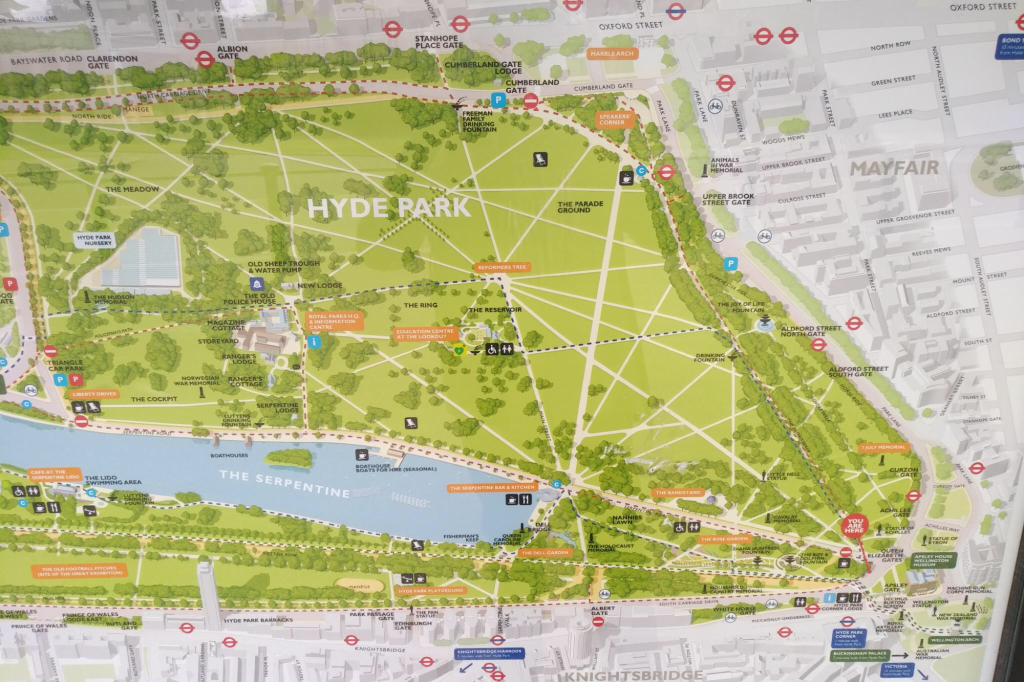
I consulted the marvel of deception that is the London Underground Map and saw that just three stops from our hotel on the Jubilee Line would take me within walking distance of Hyde Park.
Bill Bryson in his book “Notes from a Small Island” has this to say about the London Underground Map:
What a piece of perfection it is, created in 1931 by a forgotten hero named Harry Beck, an out of work draughtsman who realized that when you are underground it doesn’t matter where you are.
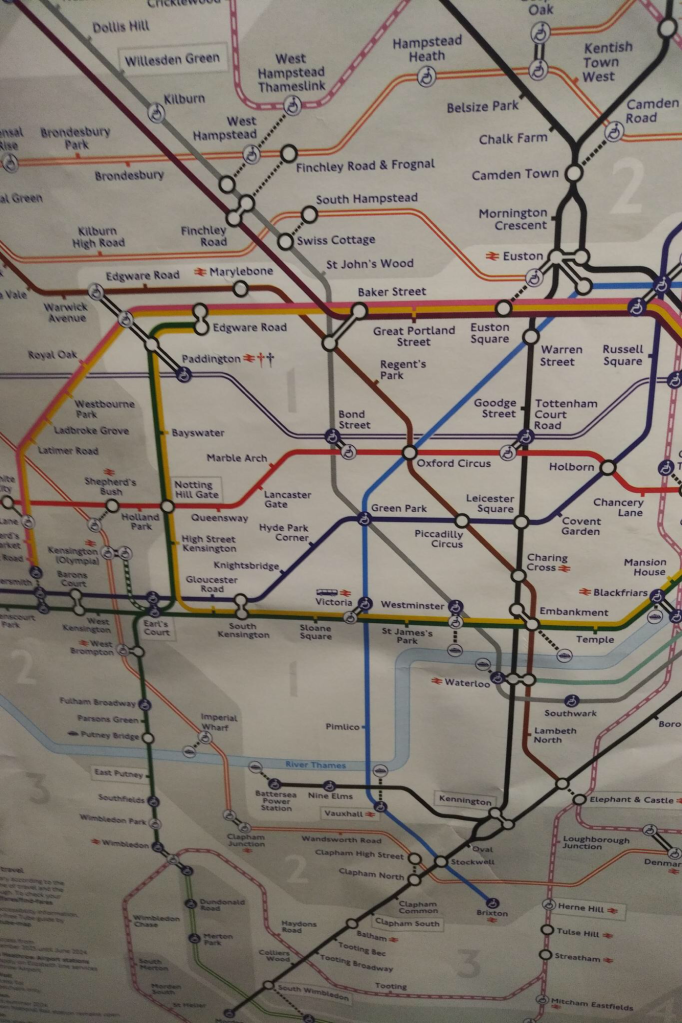
Alighting at Green Park station it was approximately a quarter mile walk to Hyde Park Corner. I kept going, deeper into the park, hoping to put some distance between the operating location and what I presumed would be higher RFI emanating from the modern urban environment at the edges of the park.
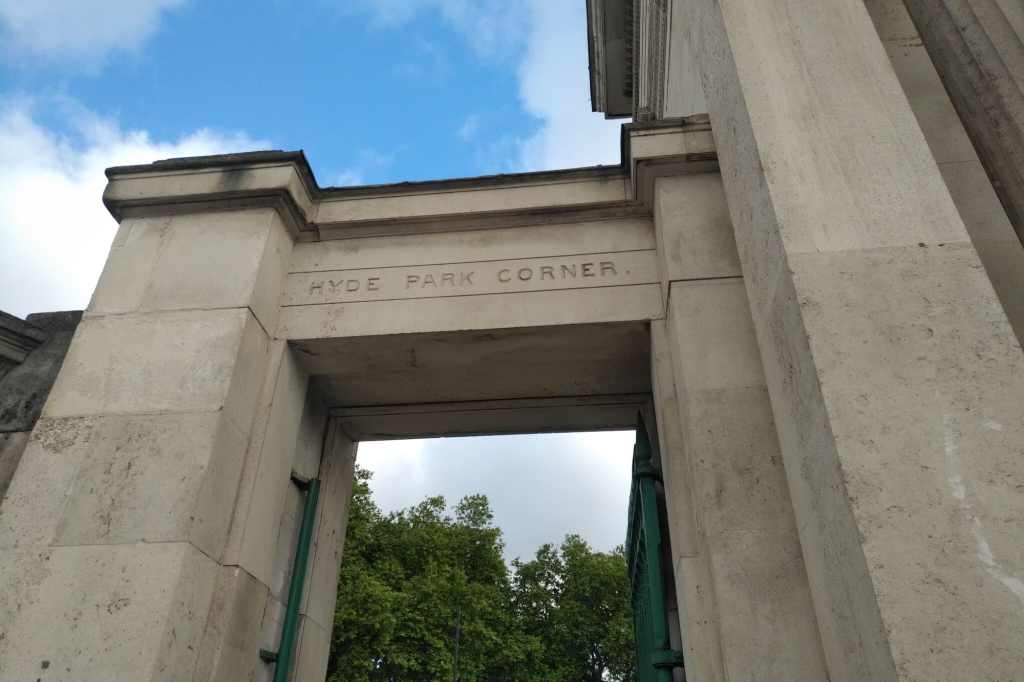
A park bench which backed up against an area of taller grass seemed like a good choice since it was off the main trail and I could set up the antenna in an area unlikely to be frequented by people.
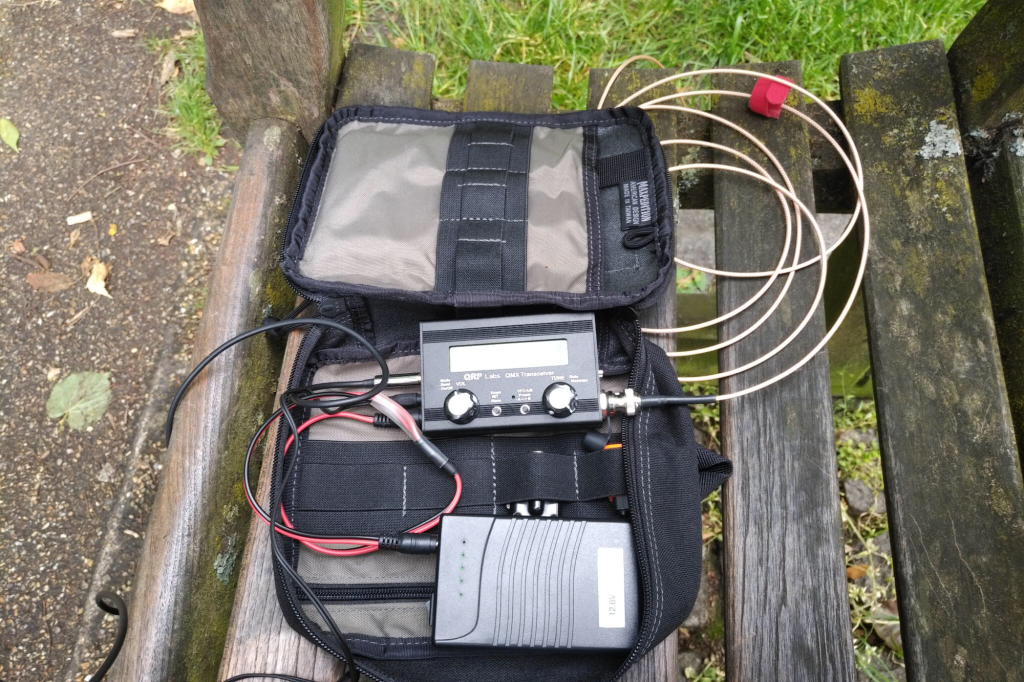
After spotting myself, I again set to calling CQ POTA with my “M/” prefixed callsign. Conditions weren’t great it seemed, but I did make three contacts before the rain once again began falling in earnest.
Waiting out the rain showers was no longer an option as I was running out of time. However, since theoretically I had until 11 o’clock that night to complete the activation, I could come back later in the afternoon and try to wrap it up.
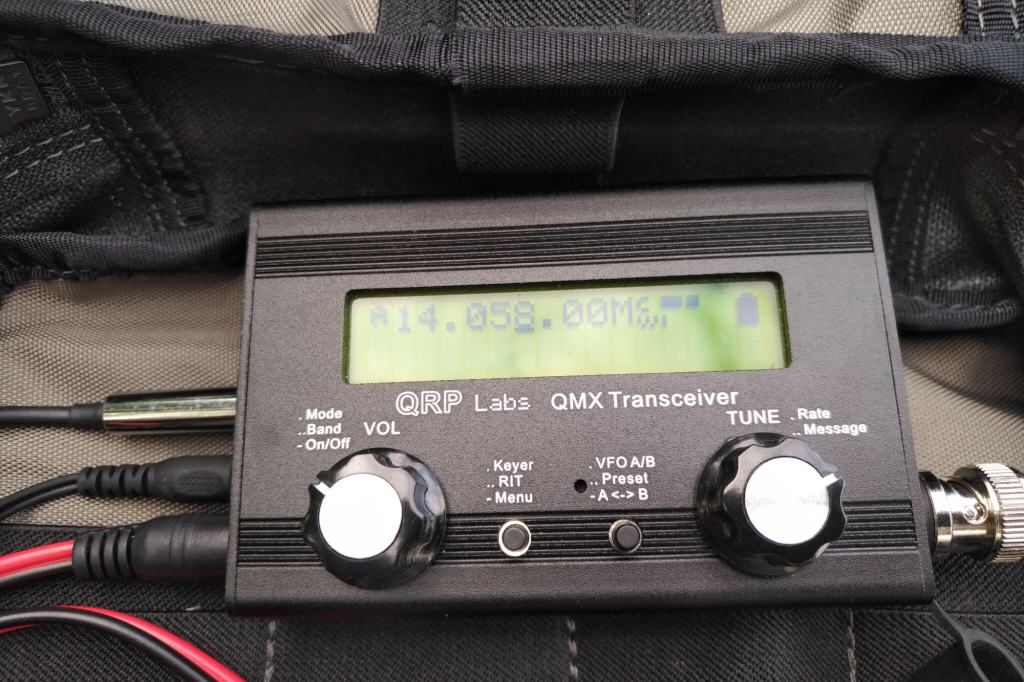
It took several hours to help my daughter to finish packing up and getting moved out of her apartment and back to our hotel, from which we’d leave early the next day for Heathrow for our flight back to San Francisco.
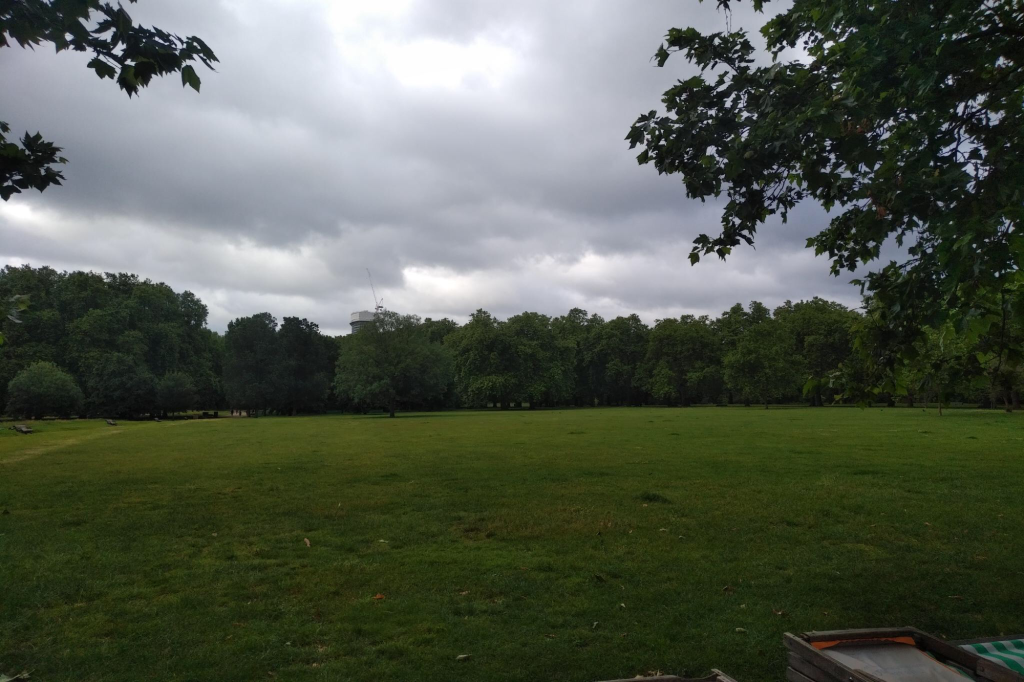
After an early dinner we found our way back to Hyde Park which was a much busier place now than it was at 8AM. The park bench which I had used earlier was unavailable so I found a place to set up the station at the edge of a broad field.
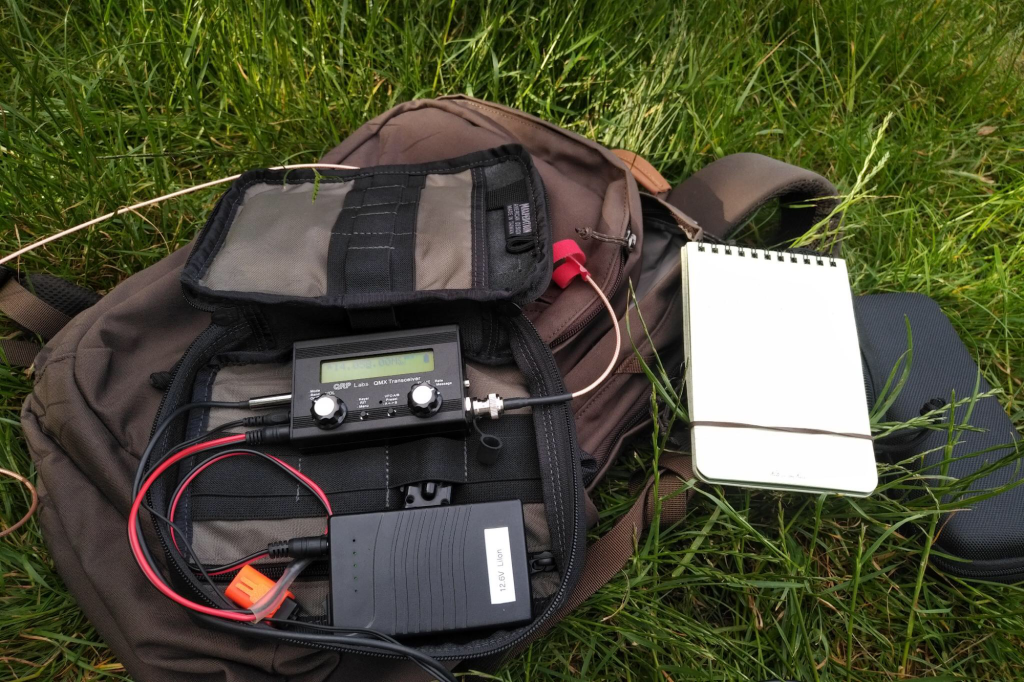
This time around, while there were definitely stations on the bands, they either weren’t hearing me or not in the mood to answer my QRP calls.
The week of walking all over (and under) London, the chilly afternoon weather, and sitting on the ground making no contacts finally got the better of me. After an hour of trying I decided to throw in the towel.
| Z35M/P | North Macedonia | 20 meters | 2024-06-16 07:56 |
| CT1GFK | Portugal | 20 meters | 2024-06-16 08:01 |
| K2UPD | Kentucky, USA | 20 meters | 2024-06-16 08:16 |
The three contacts made that morning would have to do. I uploaded my log to POTA later that evening from the hotel. While not thrilled with being the first to attempt, but not complete, the activation of Hyde Park, I put a positive spin on it. All the other activators that come after me don’t have to worry about being the first to bust an activation here. Hi Hi.
Conclusion
Rain and Sun, complete and incomplete activations, these radio outings in Great Britain were a lot of fun and enabled me to tick the box next to one of this year’s ham radio goals, which was do to a POTA activation in a foreign country.
73 de M/W6CSN
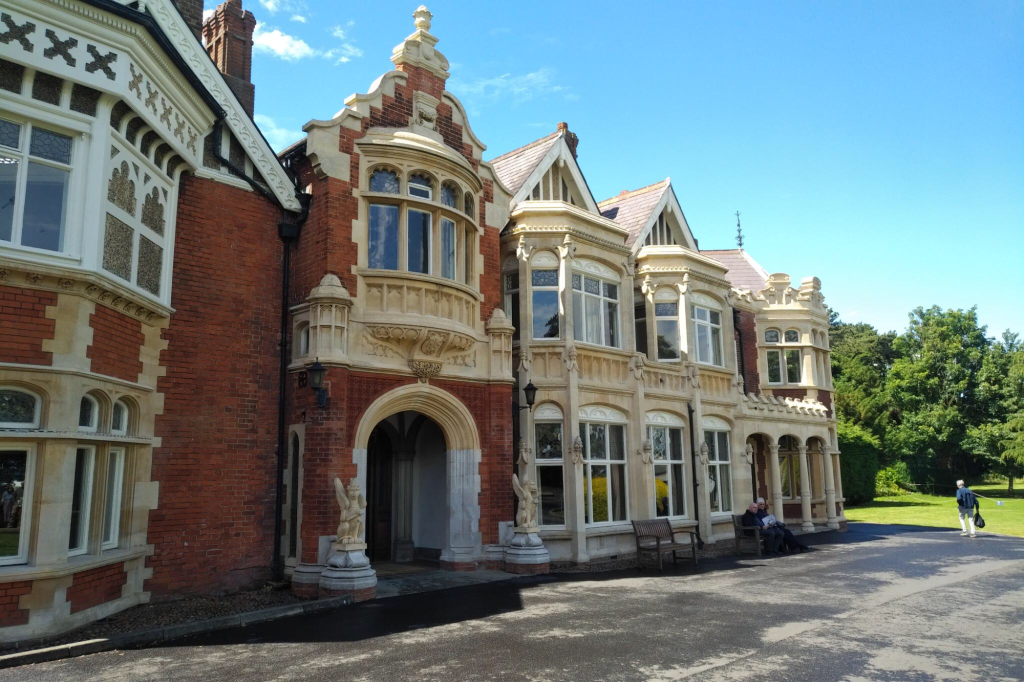
Leave a comment